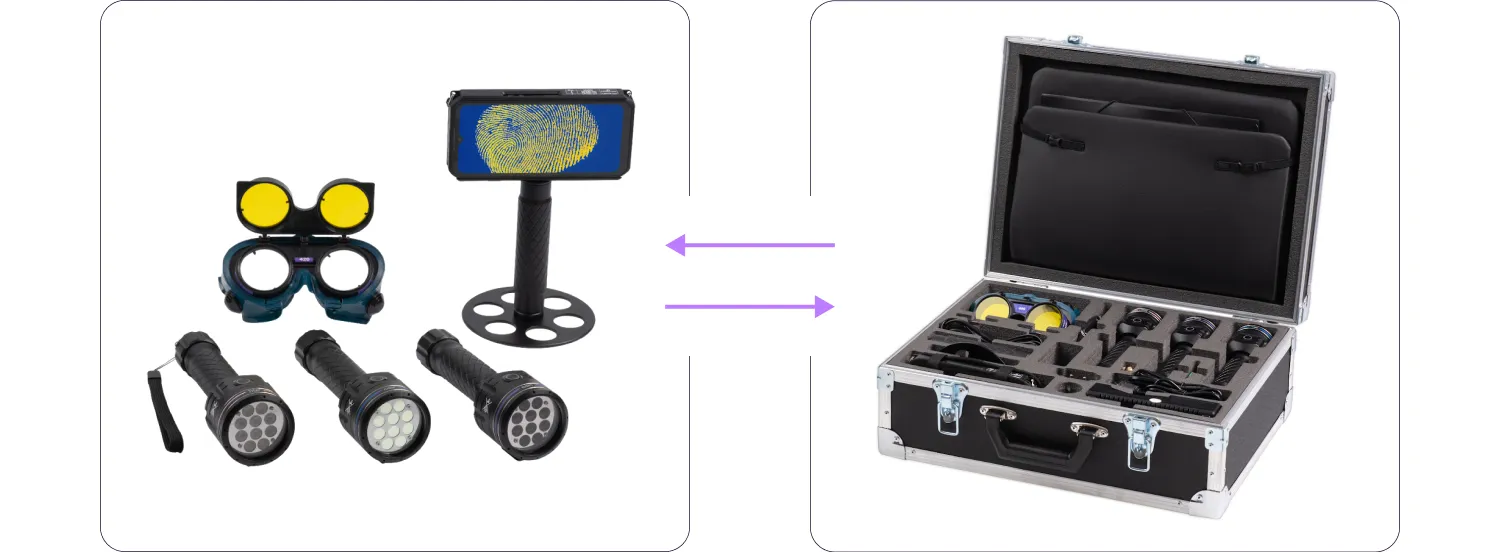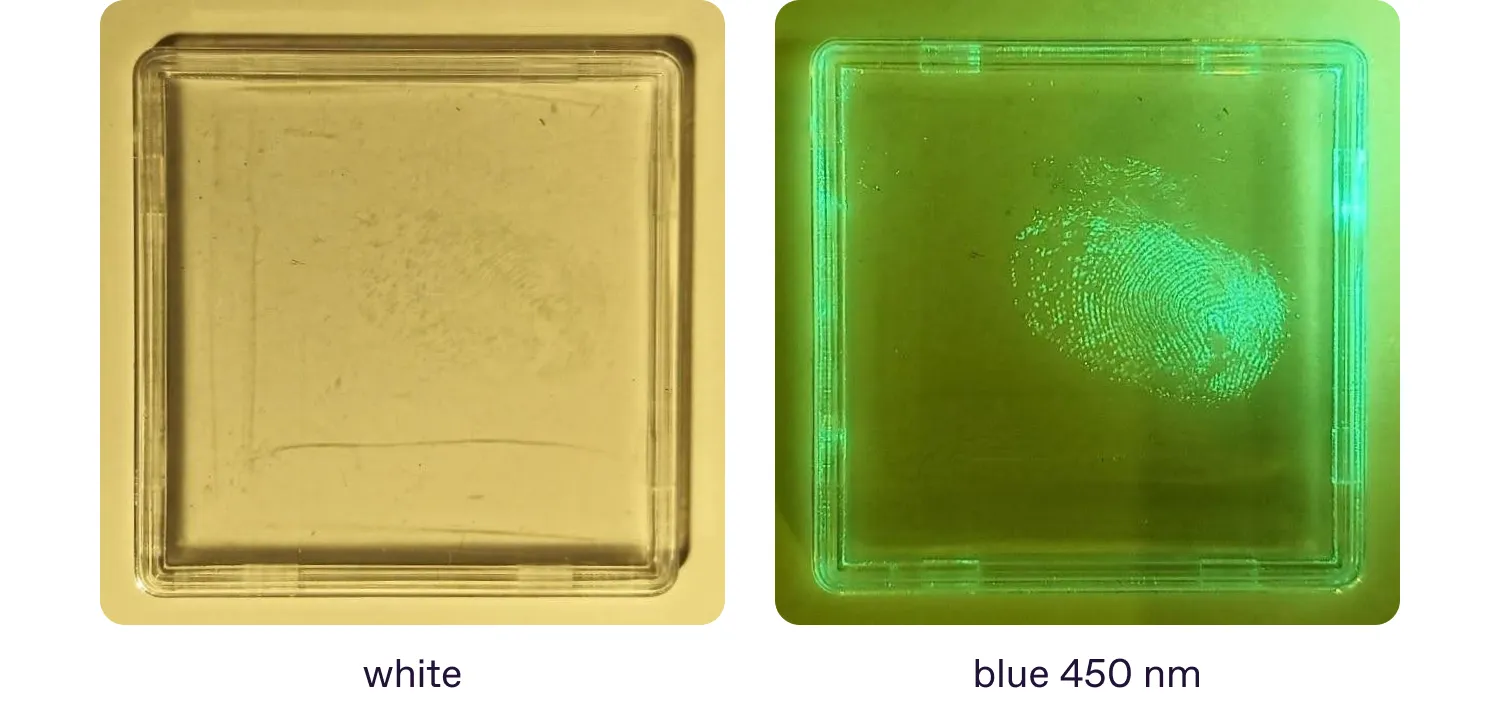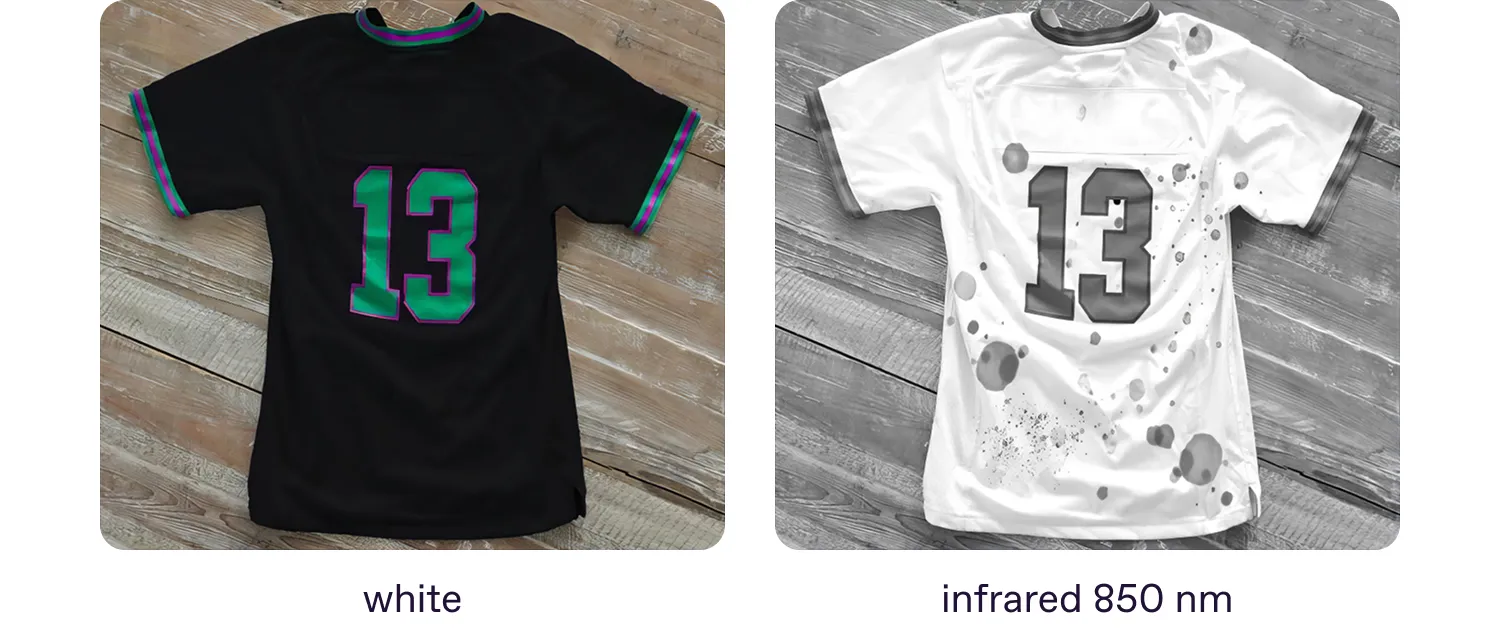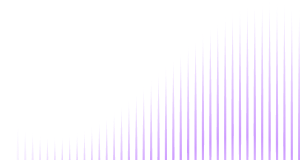Is it truly possible to commit the perfect crime—one so flawless that no evidence is ever found and the case is never solved?
Edmond Locard, a pioneer in forensic science, once formulated the exchange principle: “Every contact leaves a trace.” In other words, whenever two objects come into contact, there is an inevitable exchange of materials between them. No matter what you interact with or where you are, you will always leave something behind and take something with you.
So no matter how meticulous and neat a perpetrator might be, traces are always left behind. The challenge is detecting and capturing them.
In this article, we’ll shed light on trace evidence—biological and blood traces, fragments of teeth and bones, dactyloscopic (fingerprint) impressions, traces of gunshot residue, traces of flammable liquids and illicit substances, fibers and hair, security features on secured printed products, etc.—that can be not only detected but also captured using the Forensic Light Kit Regula 3116M.

The forensic light kit consists of three forensic light sources which feature four types of light, devices for capturing evidence with cutoff filters, and goggles with light filters.
Key types of illuminators used in investigations
Which combinations of light and filters are best suited for detecting different types of traces?
The Regula kit includes four types of light—white, ultraviolet (365 nm), infrared (850 nm), and blue (450 nm)—although white light is commonly used together with infrared. Further, we will observe the use of ultraviolet, blue, and a combo of infrared + white light.
Ultraviolet 365 nm
This light source enables examinations in the ultraviolet (UV) spectral range and does not damage DNA. Ultraviolet radiation has high photon energy, which allows it to initiate photochemical reactions in various materials. This property makes UV radiation indispensable for the detection of traces and objects that fluoresce under UV exposure, such as:
Hair
Seminal fluid
Fragments of bones and teeth
Various oils and flammable liquids
Fingerprints treated with fluorescent reagents

Detection of firearm lubricant residues, fibers, and hair on dark fabrics in the ultraviolet spectral range.

Detection of bone fragments in the ultraviolet spectral range.
Blue (450 nm)
Blue light emitted by the source is effective for visualizing biological traces, such as seminal fluid, sweat, or saliva, and fingerprints or palm prints treated with fingerprint powders or chemical reagents.
Safety precautions:When working in the blue range, it is necessary to use viewing goggles with a cutoff filter as blue light (450 nm) can be harmful to the retina with prolonged or high-intensity exposure.
Using narrowband filters allows you to capture only the light of interest while blocking noise from other wavelengths or ambient light. In a number of cases it allows for the detection of contact latent sweat and fat (sebaceous) and seminal fluid traces on multicolored or fluorescent surfaces.

Detection of a fingerprint on plastic in the blue spectral range, using a fingerprint reagent with a luminophore.

Detection of latent sweat and fat traces on a backpack handle in the blue spectral range.

Detection of seminal fluid traces in the blue spectral range.
You may wonder why the blue spectral range seems green in the pictures above. This happens because when latent sebaceous and semen traces are observed through the goggle’s yellow color filter at 490 nm, you see yellow-green luminescence—just like when you mix blue and yellow, you get green.
Infrared (850 nm) + white light
White radiation (400–700 nm) is mainly used for general illumination of traces and objects at the crime scene, as well as for photo and video recording. Different lighting techniques (oblique light, transmitted light, etc.) make it possible, in a number of specific tasks, to improve visibility and reveal previously invisible traces, such as latent sweat and fat traces on glossy surfaces or glass, shoeprints on the floor, etc.

Detection of latent sweat and fat fingerprint on a glossy surface in oblique white light.

Detection of shoeprints on the ground in white light.
Infrared radiation (IR 850 nm) is used to detect blood traces and gunshot residue, and analyze traces and marks on low-contrast surfaces. When working in the infrared range, a photo/video capturing device with an IR-sensitive camera is used, which makes it possible to visualize traces that cannot be captured by standard photography methods.

Detection of gunshot residue on dark fabrics in the infrared spectral range.

Detection of hidden blood traces on dark fabrics in the infrared spectral range.
The use of the infrared spectral range not only makes it possible to detect blood traces, but also to obtain a trace pattern of blood spatter distribution on clothing. On the device screen, traces of gunshot residue and blood appear as dark spots on a light background.
Using both in lab and on site
The Regula kit can be used both at the crime scene and in the forensic laboratory, which makes it a versatile tool.
It features enhanced moisture protection, high radiation intensity, and long operating time for the forensic light sources, which feature replaceable batteries. Also, the capture software secures photos with geotags and shooting conditions, enabling experts to conduct on-site evidence capture without compromising reliability and convenience of use.

The capturing device is fixed on a handle for convenient evidence collection while the other hand holds the forensic light source.
For laboratory work, forensic lights and the capturing device can be mounted on a tripod, boom arm, or pantograph, and the forensic lights can be powered from AC outlets so as not to waste battery power whenever it’s possible to use cords.
The system also integrates with Regula Forensic Studio, enabling instant processing of captured images, precise measurements, annotations, side-by-side comparisons, and automatic report generation. This configuration ensures that raw evidence is transformed into structured, court-ready results.

The capturing device and forensic light sources are fixed on a boom arm, freeing the forensic expert’s hands.
Conclusion
The Forensic Light Kit Regula 3116M uncovers hidden clues using specialized light sources and imaging technology both at crime scenes and in laboratory conditions. From visualizing body fluids under ultraviolet light to revealing gunshot residue with infrared light, this advanced tool helps forensic experts capture critical details that might otherwise remain unseen.
By leveraging cutting-edge forensic technology, investigators can illuminate the invisible, ensuring that no evidence goes unnoticed—and no crime remains unsolved.





